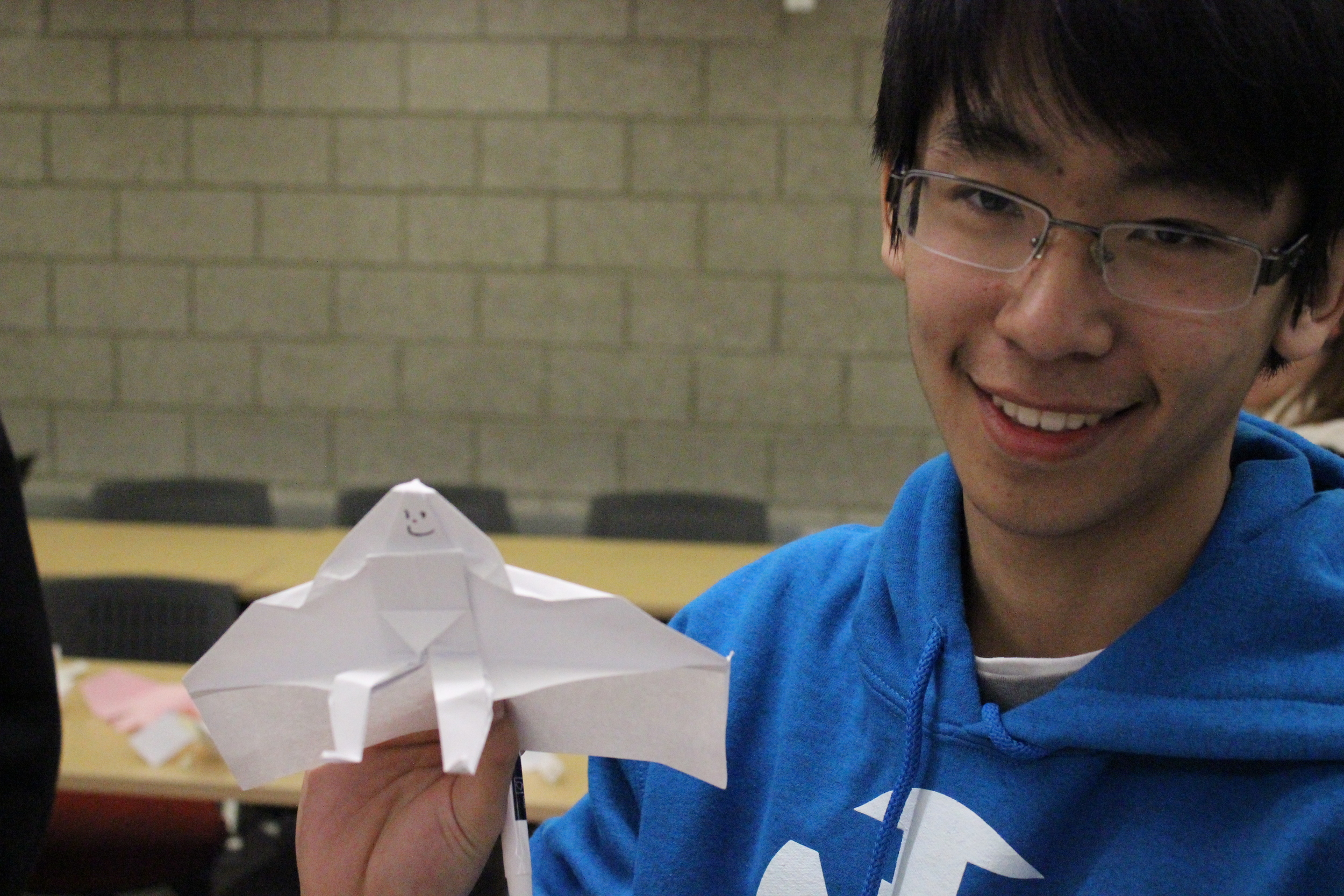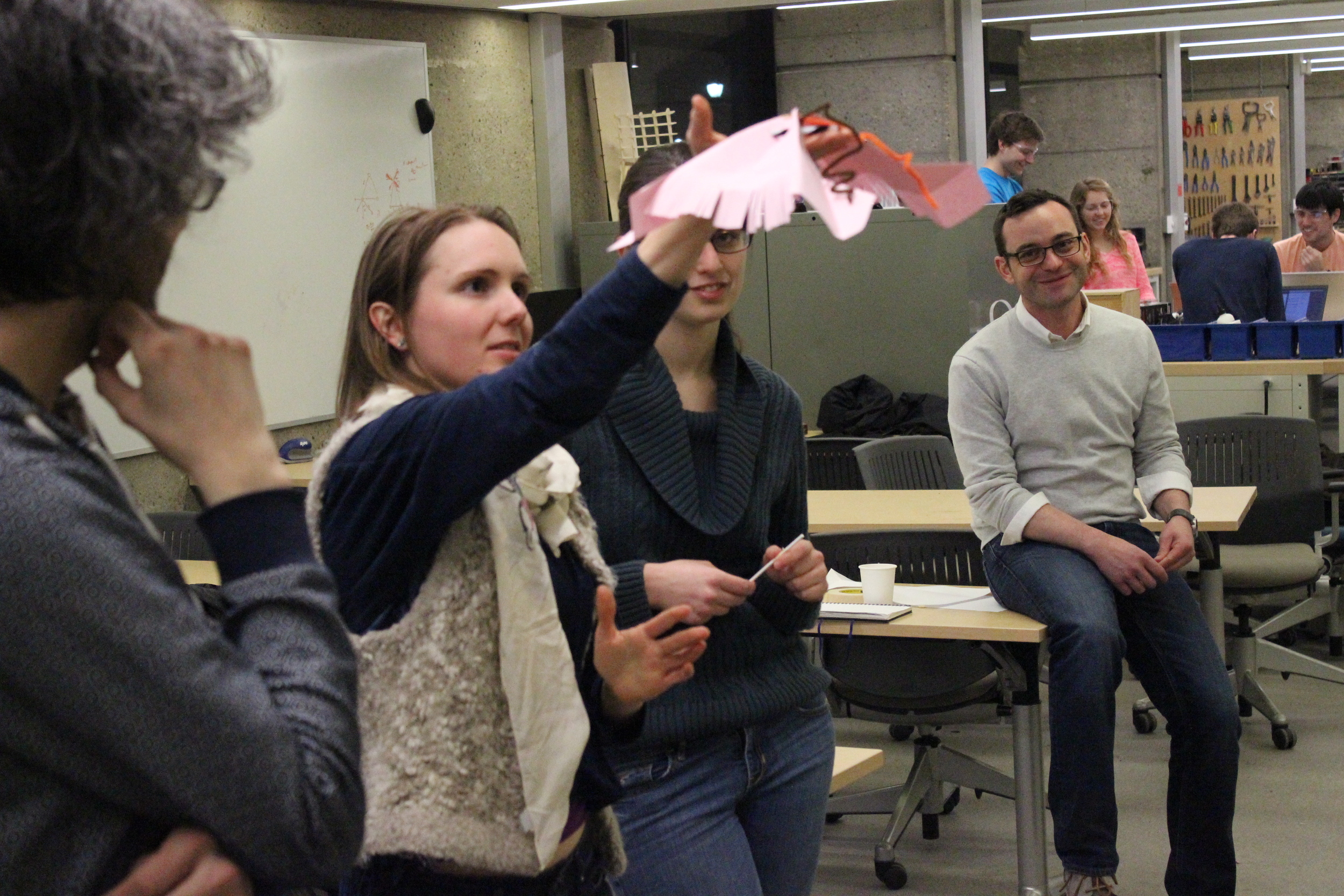“Make a paper airplane,” Ian Gonsher said addressing the crowd containing engineering undergrads, architecture students, neuroscience researchers, and Chemistry graduates. Ian is on the faculty at the School of Engineering at Brown and led this week’s Wednesday Workshop, titled Throwing Paper Airplanes at the Moon. The group set to work, most beginning by folding an 8.5 by 11 inch piece of paper down the middle. The result was a fairly similar group of conventional looking planes with flapped wings and pointed noses. The group lined up, Ian counted down, and plain white paper flew, or in many cases flopped, through the air and to ground.

One grad student was asked which plane he thought was most successful. He pointed to the one that had traveled the farthest, giving the distant as the reason for his choice. In response Ian crumpled up a piece of paper and threw it farther than any of the planes had traveled. “But its not a paper airplane,” responded the grad student. Throughout the workshop, Gonsher pushed the participants the challenge their perceptions of a successful airplane and its performance. The workshop focused on rapid prototyping, and after a few iterations, Ian even began to suggest that some of the airborne objects were no longer airplanes.
Chris Datsikas’ (’16) first plane did a front flip reliably every time it was flown. Ian found this interesting and brought it to the attention of the group. In the next iteration a few planes played off this concept of flipping, and after a few more prototypes, the same grad student who originally picked the farthest traveling plane as the best had constructed a paper object that spun as it fell vertically.
With this move away from horizontal flight, the playing field was open. People began drawing on the pieces of paper and digging into the pile of nonpaper supplies that had been in front of them the whole time. A discussion of the release method of the “planes” resulted in a dart-like flying object launched by blowing through a straw. This circular shape inspired Alex Carillo ('16) to make a plane out of a hollow truncated paper cone, with the hope of creating a simplified design for a paper airplane that glides well.
The workshop took a step away from the usual problem solving, specific goal oriented approach of many projects, and instead emphasized a creative process where the outcome and its function are fluid. Gonsher inspired a room full of adults to step away from the bounds of what they knew and playfully create beyond the constraints of a paper airplane.





